
Logan Circle is a historic roundabout park and neighborhood of Washington, D.C., located in Northwest D.C. The majority of Logan Circle is primarily residential, except for the highly-commercialized 14th Street corridor that passes through the western part of the neighborhood. In the 21st century, Logan Circle has been the focus of urban redevelopment and become one of Washington's most expensive neighborhoods. Today, Logan Circle is also one of D.C.'s most prominent gay neighborhoods.
Brown v. Board of Education National Historical Park was established in Topeka, Kansas, on October 26, 1992, by the United States Congress to commemorate the landmark decision of the U.S. Supreme Court in the case Brown v. Board of Education aimed at ending racial segregation in public schools. On May 17, 1954, the Supreme Court unanimously declared that "separate educational facilities are inherently unequal" and, as such, violated the 14th Amendment to the United States Constitution, which guarantees all citizens "equal protection of the laws."

Shaw is a neighborhood of Washington, D.C., located in the Northwest quadrant. Shaw is a major entertainment and retail hub, and much of the neighborhood is designated as a historic district, including the smaller Blagden Alley-Naylor Court Historic District. Shaw and the U Street Corridor have historically have been the city's hub for African-American social, cultural, and economic life.

LeDroit Park is a neighborhood in Washington, D.C. located immediately southeast of Howard University. Its borders include W Street to the north, Rhode Island Avenue and Florida Avenue to the south, Second Street NW to the east, and Howard University to the west. LeDroit Park is known for its history and 19th century protected architecture. The community's diversity entices new residents to the community, as well as its close proximity to the Shaw–Howard University Metro station and many dining options.

Mount Vernon is a neighborhood of Baltimore, Maryland, located immediately north of the city's downtown. It is named for George Washington's Mount Vernon estate in Virginia, as the site of the city's Washington Monument.

The U Street Corridor or Greater U Street, sometimes known as Cardozo/Shaw, is a neighborhood in Washington, D.C., located in Northwest D.C. Centered along U Street, the neighborhood is one of Washington's most popular nightlife and entertainment districts, as well as one of the most significant African American heritage districts in the country.
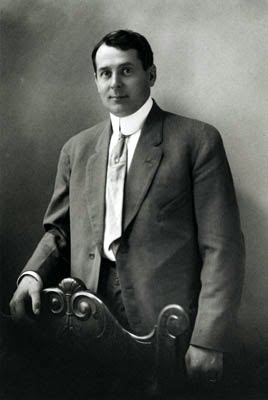
Harry Wardman was a real estate developer in Washington, D.C. during the early 20th century whose developments included landmark hotels, luxury apartment buildings, and many rowhouses. When he died in 1938, one-tenth of the residents of Washington were said to live in a Wardman-built home.

The Blackstone Hotel is a historic 290-foot (88 m) 21-story hotel on the corner of Michigan Avenue and Balbo Drive in the Michigan Boulevard Historic District in the Loop community area of Chicago, Illinois. Built between 1908 and 1910, it is on the National Register of Historic Places. The Blackstone is famous for hosting celebrity guests, including numerous U.S. presidents, for which it was known as the "Hotel of Presidents" for much of the 20th century, and for contributing the term "smoke-filled room" to political parlance.

Mihran Mesrobian was an Armenian-American architect whose career spanned over fifty years and in several countries. Having received an education in the Academy of Fine Arts in Constantinople, Mesrobian began his career as an architect in Smyrna and in Constantinople. While in Constantinople, Mesrobian served as the palace architect to the last Ottoman Sultan, Mehmed V.

The General Post Office, also known as the Tariff Commission Building, is a historic building at 700 F Street NW in Washington, D.C., United States. Built in 1839 to a design by Robert Mills and enlarged in 1866 to a design by Thomas U. Walter, it is an example of Greek Revival architecture. It was designated a US National Historic Landmark in 1971 for its architecture. The building has housed the Hotel Monaco since 2002.

The Strivers' Section Historic District is a historic district located in the Dupont Circle neighborhood of Washington, D.C. Strivers' Section was historically an enclave of upper-middle-class African Americans, often community leaders, in the late 19th and early 20th centuries. It takes its name from a turn-of-the-20th-century writer who described the district as "the Striver's section, a community of Negro aristocracy." The name echoes that of Strivers' Row in Harlem, a New York City historic neighborhood of black professionals. The district is roughly bounded by Swann Street and the Dupont Circle Historic District on the south, Florida Avenue and the Washington Heights Historic District on the north and west, and the Sixteenth Street Historic District on the east.
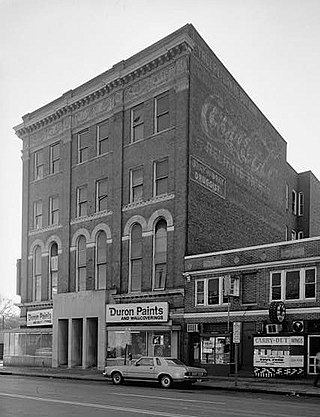
The True Reformer Building is an historic building constructed for the True Reformers, an African American organization founded by William Washington Browne. The building is at 1200 U Street, Northwest, Washington, D.C. in the U Street Corridor (Cardozo/Shaw) neighborhood. It was designed by John Anderson Lankford. The building was commissioned by the Grand United Order of True Reformers in 1902. It was dedicated on July 15, 1903.
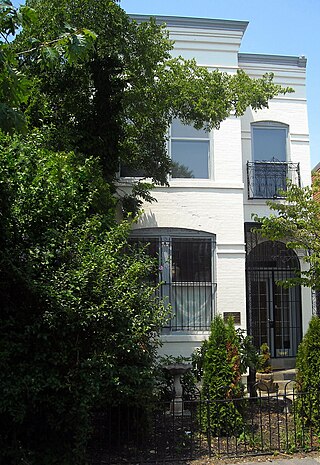
The Evans-Tibbs House is an historic house in the Shaw neighborhood of Washington, D.C. It has been listed on the District of Columbia Inventory of Historic Sites since 1985 and it was listed on the National Register of Historic Places in 1987. It is a contributing property in the Greater U Street Historic District.
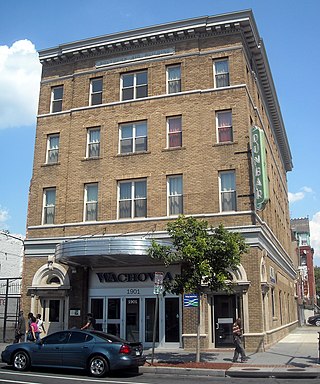
The Southern Aid Society Building–Dunbar Theater is an historic structure located in the Shaw neighborhood of Washington, D.C. The building was designed by architect Isaiah T. Hatton. Reginald W. Geare designed the theater portion of the building. It was completed in 1921. It has been listed on the District of Columbia Inventory of Historic Sites since 1984 and it was listed on the National Register of Historic Places in 1986. It is a contributing property in the Greater U Street Historic District.

Shaw Junior High School, now known as Asbury Dwellings, is a historic structure located in the Shaw neighborhood of Washington, D.C. It has been listed on the District of Columbia Inventory of Historic Sites and on the National Register of Historic Places since 2008.
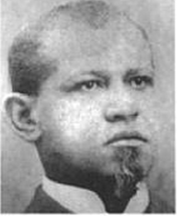
Calvin Thomas Stowe Brent (1854-1899) was an American architect. He is generally thought to be the first African-American to practice architecture in Washington, D.C.

Isaiah T. Hatton (1883–1921) was an architect in the United States known for his designs of buildings for his fellow African Americans. Several are listed on the National Register of Historic Places.
The Manse Hotel is a historic place and former hotel in Walnut Hills, Cincinnati, Ohio which was important to the American civil rights movement. The hotel accommodated African American people and events during a time when African Americans were not allowed to stay in other Downtown hotels because of racial segregation. It was listed in The Negro Motorist Green Book from the 1940s through the 1960s and along with the Manse Hotel Annex has been listed on the National Register of Historic Places since August 8, 2019.
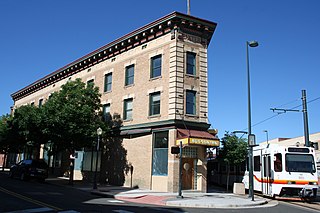
The Rossonian Hotel, is a historic building and former business located at 2650 Welton Street in the Five Points section of Denver, Colorado, United States. It is listed on the National Register of Historic Places since in 1995, for ethnic heritage and social history. It has also been known as the Baxter Building and as the Baxter Hotel.

















